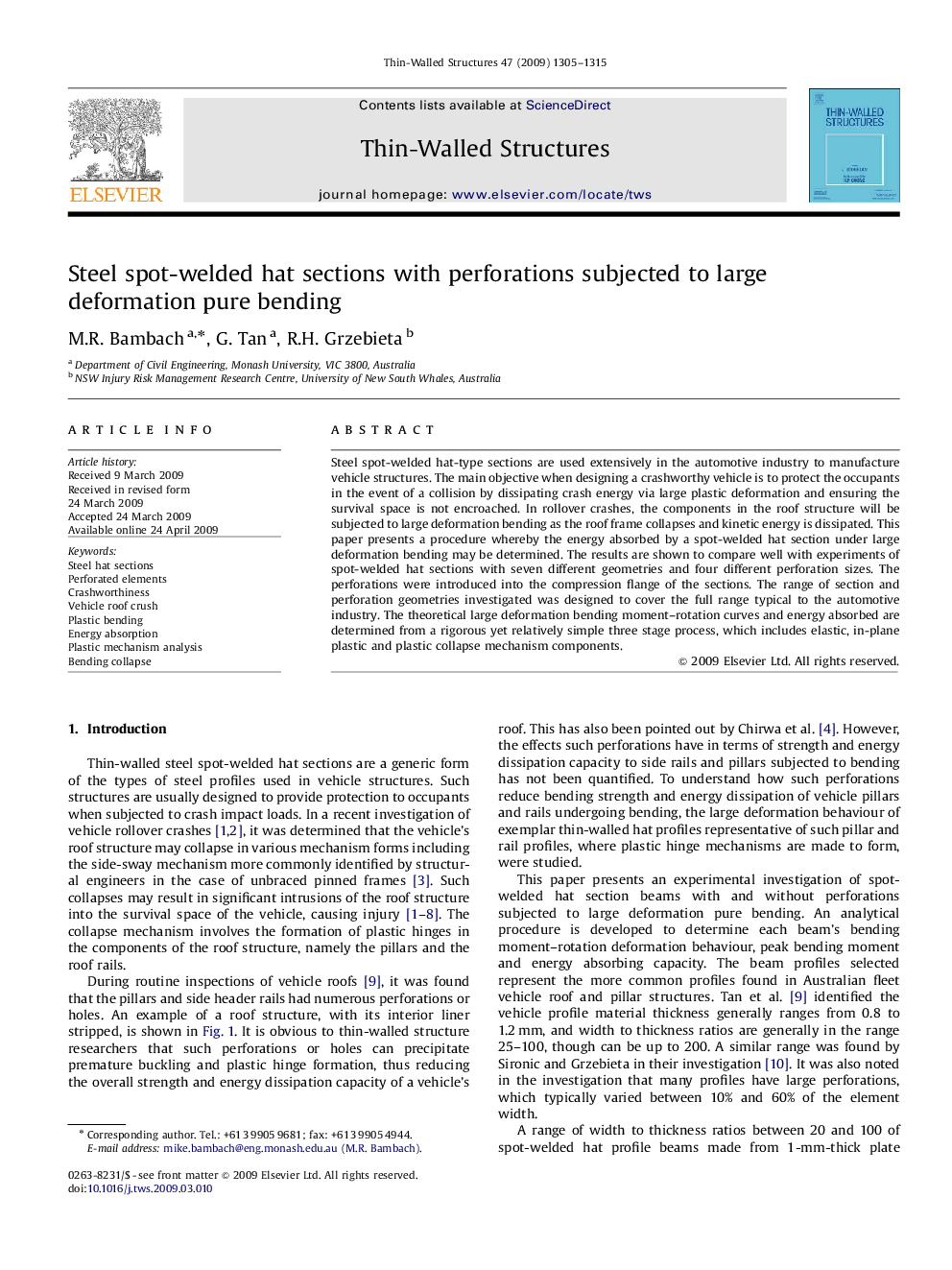| Article ID | Journal | Published Year | Pages | File Type |
|---|---|---|---|---|
| 309498 | Thin-Walled Structures | 2009 | 11 Pages |
Steel spot-welded hat-type sections are used extensively in the automotive industry to manufacture vehicle structures. The main objective when designing a crashworthy vehicle is to protect the occupants in the event of a collision by dissipating crash energy via large plastic deformation and ensuring the survival space is not encroached. In rollover crashes, the components in the roof structure will be subjected to large deformation bending as the roof frame collapses and kinetic energy is dissipated. This paper presents a procedure whereby the energy absorbed by a spot-welded hat section under large deformation bending may be determined. The results are shown to compare well with experiments of spot-welded hat sections with seven different geometries and four different perforation sizes. The perforations were introduced into the compression flange of the sections. The range of section and perforation geometries investigated was designed to cover the full range typical to the automotive industry. The theoretical large deformation bending moment–rotation curves and energy absorbed are determined from a rigorous yet relatively simple three stage process, which includes elastic, in-plane plastic and plastic collapse mechanism components.
